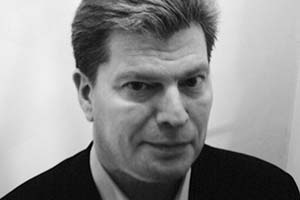
And may your Dave go with you: The documentaries of Dave Allen
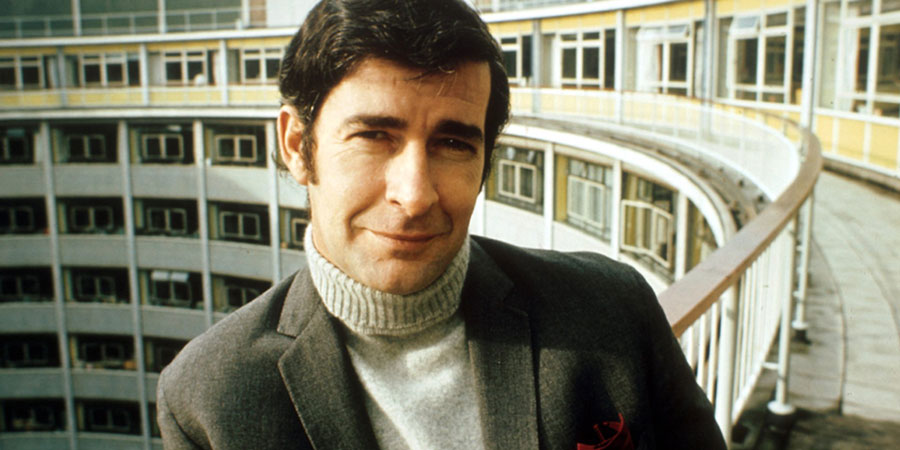
Almost half a century ago, the comedian Dave Allen decided that he wanted to do something that others thought completely different: he wanted to make a documentary. Comedians making documentaries is quite a commonplace phenomenon these days - indeed, the practice has become such a staple of the schedules that it sometimes seems as though there are more comics cluttering up the Silk Road than there are performing comedy inside the clubs - but when Dave Allen started doing it he was a proper pioneer.
The programme in question was called In Search Of The Great English Eccentric, and it remains not only a classic of its kind, but also a template for anyone who wishes to be curious rather condescending about the people they happen to encounter. It was intelligent, it was respectful, it was compassionate and it was hugely entertaining; it was, in short, a wonderful demonstration of how someone who has a gift for finding laughter in life can also find life in laughter.
How did such a project come about? It came about because of something that had always been, and would always remain, an essential part of what made Dave Allen tick: an instinctive and utterly inextinguishable interest about other human beings.
What is often overlooked about the comedian is that his deepest roots were in journalism. He was brought up to know that every soul had a story.
His father, Gerard Cullen Tynan O'Mahony, was the managing editor of The Irish Times, and a man who seemed to have a tale to tell about anyone who was anyone in Ireland, from the finest writers and artists to the most feckless of bruisers and barflies. Dave's two brothers, John and Peter, would follow in their father's footsteps, and he, too, started work as a copy-boy with the Drogheda Argus before moving to England and, after a brief flirtation with Fleet Street, carving out a new career in comedy.
Even as a comedian, however, he was still driven by the traditional 'five Ws' of journalism: Who, What, When, Where and, most important of all, Why?
He was always asking himself 'why?' Why do some people do this and others do that, why some think one thing and others something else, why some tend to conform and others rebel? Everywhere he went, he would watch and listen and observe, scribbling down notes on whatever newspaper, magazine, napkin or beermat he happened to have closest at hand.
It was how he did his research, how he came to reflect, how he cultivated his comedy, and, although his material was shaped and structured expressly for stand-up, it could just as easily have been crafted for a newspaper column. He never really stopped being a journalist; he merely delivered his findings in a different form.
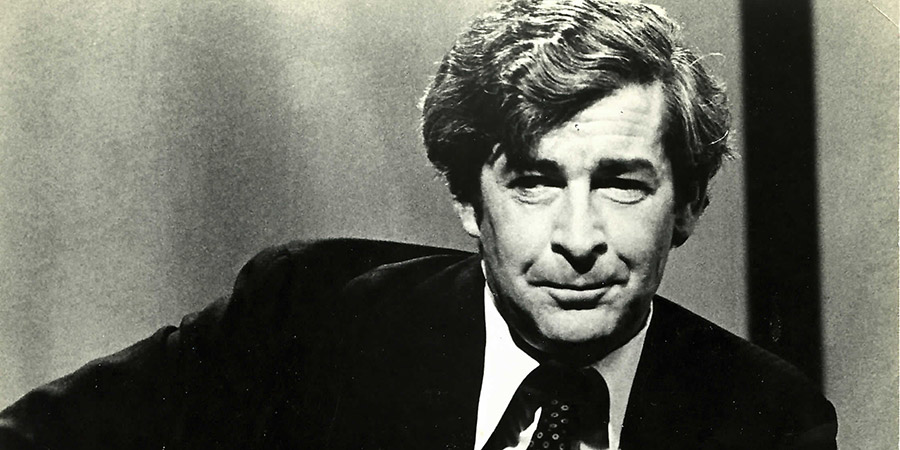
When he was first making his mark as a talk show host on Australian TV in the early 1960s, he was not just impressing with his wit but also with his gift for engaging with guests. It did not matter to him whether it was a celebrity or an ordinary member of the public, whether it was an old person or a young one, an introvert or an extrovert, he was always fascinated by what made them really distinctive as an individual.
Instead of talking at people, he listened to them. Rather than try to manoeuvre them to suit his preconceptions, he gave them the space in which to surprise him. He liked to find things out about other people; he loved to learn what made them live.
It was much the same when, later in that decade, he returned to England and started appearing on British TV. When the BBC first invited him to try out some ideas in a pilot show, his guests included an Irish publican who liked to pull revving motorcycles with his teeth, and a champion egg swallower from Cannock; he was not interested in mocking them - he just wanted to understand, appreciate and celebrate what others merely saw as their oddity.
When ATV later offered him a contract to star in a comedy series, rather than seek to push up his price or insist on additional privileges, he only agreed to the deal after they promised to let him 'widen my professional scope' by also making a programme about the state of race relations. His new bosses were baffled, but to Allen it seemed one of the most natural projects he could have pursued.
The result was Dave Allen In The Melting Pot: a personal investigation into what had become of the millions of Europeans who had immigrated to America over the past one hundred years. To make it, he flew over to New York with his producer, David Rea, and spent nine weeks not only meeting the prosperous and the powerful but also seeking out and talking to anyone on (or over) the edge of what was considered at the time to be 'normal' society.
He spoke to the homeless, alcoholics, drug addicts, abused women, openly gay people and radical militant activists. He explored ethnic discrimination, sexual prejudices, religious intolerance, social and economic inequality and political conflict between classes. There was no agenda, no structure to suit, just an open mind and a keen eye and ear.
Broadcast on 23rd December 1969, it was fresh, fascinating, sometimes alarming, sometimes moving and consistently insightful, proving his point that 'there is no reason why a comedian cannot look objectively at life'. Most of the critics in Britain, however, seemed too confused or nervous to comment in public upon it, any reviews were rare, and Allen soon moved back to the BBC, where he crafted a showcase for his comedy in the long-running Dave Allen At Large. He was far from finished, however, with the factual side of television.
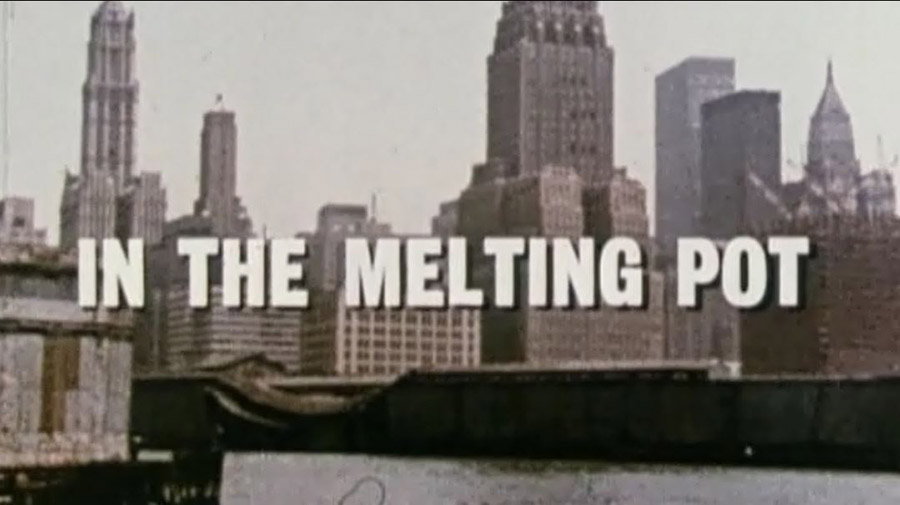
'That never surprised me about him,' Allen's friend and patron Bill Cotton would later tell me. 'Because Dave wasn't one of those people who compartmentalised the different aspects of his personality, let alone allowed others to do it for him. We'd often have dinner together and he'd talk about art, literature, politics, religion, sport, love, life, death - it was all of a piece with him. He was serious when he was being witty, and he was witty when he was being serious. So whether it was Dave Allen At Large or a documentary, it was essentially the same thing - it was always just this very clever, very thoughtful, very decent man trying to make sense of the world around him.'
A chance for Allen to re-launch his documentary career arrived early in 1974 when he was appearing (in the dual roles of Mr Darling and Captain Hook) in a production of Peter Pan at the London Coliseum. He was visited backstage by a young up-and-coming film-maker called Robin Brown.
Brown was a protégé of Bob Heller, the American-born Head of Documentaries at ATV. He had already travelled much of the world making powerful factual programmes about a number of ecological and political topics, but now Heller, acting on a hunch, had decided to nudge him in the direction of Dave Allen.
Brown, although a fan of Allen, was not at all sure what kind of collaboration he might be able to have with the popular comedian, but he dutifully followed Heller's instructions and knocked on the star's dressing room door. After one long, rambling, hugely entertaining conversation, they felt like kindred spirits, and resolved to pursue a programme-making project together.
They spent the next few weeks trading various ideas until Allen focused on the notion of the modern tension between the mores of the majority and the minority, between integration and alienation, and respect and contempt. How is the point arrived at, he wondered, whereby any particular individual lifestyle is deemed 'normal' rather than 'abnormal'? Why are some quite harmless deviations from conventional ways of spending one's free time accepted, while others are depicted and dismissed as 'eccentric'? Who decides, and why, where the 'right' balance is between doing what most people do and doing something different? These were the kind of questions, Allen and Brown agreed, that were worthy of exploring.
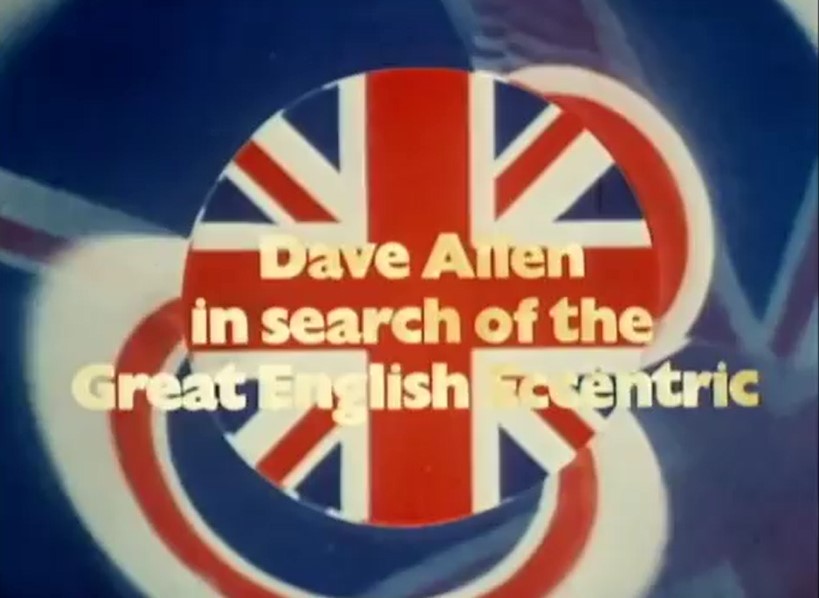
The consequence was that they proceeded, as soon as both men's schedules allowed it, to plan where to visit and whom to see. Allen, Brown and their newly-assembled team of researchers thus started the time-consuming task, in that pre-online era, of searching for possible subjects - touring libraries and cuttings archives; sounding-out their combined network of families, friends and colleagues; and calling every local newspaper in the country to inquire as to any home-grown 'characters' their reporters might happen to know. Hundreds of individuals were researched and considered ('It soon became apparent,' Brown would say, 'that Britain was squirming with eccentrics'), then a long-list of potential interviewees was compiled, and then this was gradually reduced, via a sequence of preliminary visits and conversations, to a short-list, and a filming schedule was prepared.
Allen and Brown then embarked on a 5,000-mile journey around Britain, recording many hours of material which would later be edited down into a fifty-minute programme. They knew they were going to relish the experience when, very early on in their travels, they met a very serious man named Guy Nevill, who was the proud but somewhat anxious owner of a skull he had found of a fourteenth-century practical joker from Devon[/x. 'I actually handled the skull myself,' he told the two men of his initial discovery. 'And on the way back up the motorway I have to tell you that my trousers mysteriously caught fire.' He then stared at them solemnly and added: 'This is absolutely true.'
Allen would stick to the rules that he established right from the start: there must be no judging, either explicit or implicit, of anyone he meets - no sly smirks behind their back, no mocking glances at the camera and no cheap jokes at his interviewees' expense. Brown fully agreed with this approach: 'These are real people,' he said, 'who have something to important to tell us if we can just have the good manners to listen with an open mind.'

When the rough cut of the finished film was shown to Bob Heller back at ATV, the initial reaction was a mixture of bemusement and unease. 'Oh, come on!' barked Heller at one point early on at what he considered to be the over-indulgence of a mere misfit. 'Is this a documentary?' A little later into the screening and Heller was shifting in his chair impatiently and sucking his teeth at some of the strange sights on show. 'Does Dave ever tell a joke?' he muttered with a heavy sigh of exasperation.
Eventually, however, he 'got' it. He watched on, and started to see the decency of it, the compassion of it, but also the unforced insightfulness of it. It was an inclusive film about individuals who were normally regarded as outsiders.
He thus came to appreciate the slogan that Allen and Brown had kept repeating to him throughout the whole project: 'Disbelief suspends itself in the right company'. In Search Of The Great English Eccentric, Heller felt, was a documentary of which he, like its makers, could and should be proud.
Broadcast on Tuesday 8th October 1974 at 9:10pm, the programme began with the blue-black backdrop of the night sky, the stirring sound of The Dam Busters March, the howl of an aircraft engine, the rat-a-tat-tat of machine-gun fire and a close-up of what appeared to be a Battle of Britain pilot busy at the controls as his Spitfire, hurtling through the darkness, prepared to dip into a deep dive. Then, suddenly, there was kindliness rather than carnage, as a smiling figure moved into view on the outside of the cockpit, tapping on the window. It was Dave Allen. 'Excuse me, Mr Lacey,' he said. 'Can I come in?'
It turned out that Mr Bruce Lacey was a middle-aged mechanic (and part-time prop designer, robot maker and would-be pop star) who had basically anticipated the phenomenon of computer games by building his own cockpit and control panel out of scrap metal and various discarded electronic devices in his East End of London workshop, and then linked them up to a small monitor, strapped behind the joy-sticks, showing black-and-white archive footage from the Second World War.

Allen joined him in the cockpit. 'Can I fire at that airplane?' he asked. 'Yes, you can,' answered Lacey. 'It's one of ours, but fire at it all the same.'
He was just (like future game geeks would later be) a bit obsessed by the virtual experience he had created. 'Are you really flying?' Allen asked him, with gentle concern. 'Yes!' Lacey exclaimed brightly as he continued to gaze at the monitor. 'I don't know where the hell I am actually. I'm in a strange world of illusion and fantasy and reality. It's a marvellous world to be in.'
Allen's next interviewee was a seventy-four-year-old meek little man called Alexander Wortley, who had travelled the country three times over in a number of makeshift mobile homes until, a quarter of a century ago, he had finally settled in Langley Park, Berkshire, in a tiny green metal railway box lodged beside, but still scrupulously separate from, a local family's cosy cottage. 'Why did you give up travelling?' Allen asked him. Wortley, peering out at the visitor from within his darkened home like a timid tortoise emerging from its shell, simply pointed out matter-of-factly that he no longer had any wheels.

The film then cut to another light and leafy part of the Elgar-scored English countryside, and crept inside a modest little village church, where a balding, bespectacled, bland-voiced vicar was in the middle of a sermon. 'Man shall not live by bread alone,' he said. 'Adventure, either physical or spiritual or mental - it surely is an essential in the life of anyone who is to be truly alive. Because life can be oh so dull, and so grey, and so mediocre, and so small, and so inward-looking in this day and age. So dead. And some people, it would seem, will never be more dead than they are at the moment.'
At that very point, in a masterful piece of editing from Brown, the picture dissolved to the battered-looking back door of the Rectory, where the vicar reappeared, but this time with a Stetson on his head, and sporting a blue denim shirt and jeans, a brown leather waistcoat, brown leather chaps and riding boots, with a white rope coiled around his hands. As he moved forward, in slow motion, hurling his lasso over a log horse, the further words of his sermon could still be heard: 'And what's faith but the greatest adventure of all? The greatest gamble, with the highest stakes a man can possibly lay: his immortal soul.'

In another clever cut by Brown, as the cowboy vicar rode off across the dewy fields, it seemed as though the space he had just left had been filled by another figure on horseback - a Sioux Native American chief. We were actually now in the environs of an English seaside town, where the retired plumber Edward H. Blackmore, and his wife Phyllis (both of them clothed in traditional eagle-feather and deerskin tribal dress), welcomed Allen into their tepee, which had sprouted up between the rows of neighbouring washing lines in the back garden of their terraced house, and invited him to have a puff on their pipe of peace.
'Mr Blackmore,' remarked Allen politely, 'this is not what one would really expect to find in a place like Eastbourne.' The very serious-looking self-made chief nodded and went on to explain that his obsession with all things Sioux had started when he was a nine-year-old boy ('It just gets you and you can't give it up'), and led eventually to him, during a visit to South Dakota, being adopted into the tribal nation by none other than the grandson of Sitting Bull himself, who, quite perceptively, gave him a special name ('Hunkeshnee') meaning 'slow, deliberate or thoughtful'.
The historical knowledge he proceeded to expound on the oppression and exploitation of North America's indigenous people 'by the white man' marked him out as not so much the 'misfit' he labelled himself but rather simply a man ahead of some of the misconceptions of the era. The camera did also catch, however, his more conservative attitude towards his semi-silent wife (whom he referred to as 'Curly' even though she was wearing a wig of long and very straight black hair), whose sole reminiscence on camera concerned their cold and rain-sodden Easter-time honeymoon in a home-made tepee in a Sussex field.
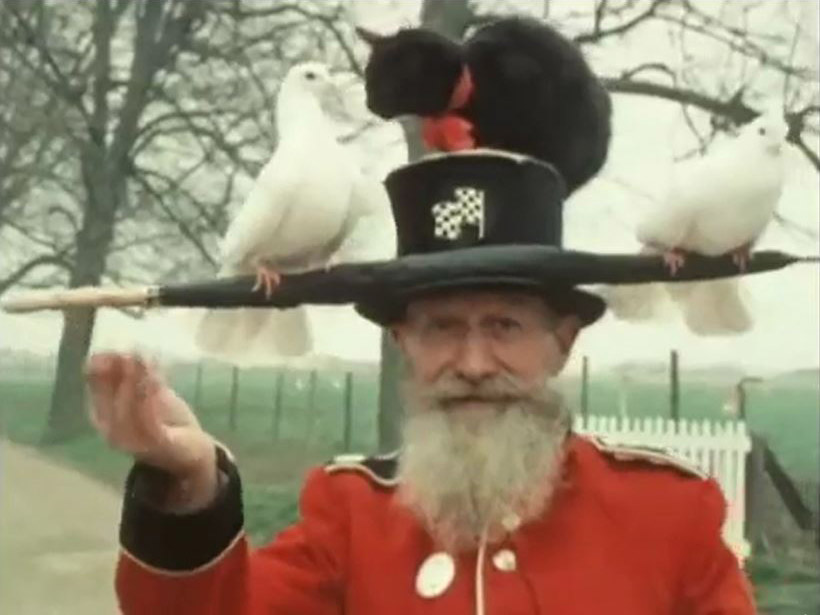
Allen then moved on to the village of Oakington in Cambridgeshire, where a character called Walter 'Snowy' Farr - a white-bearded former road sweeper with a high-pitched voice, a thick Fenland accent and a cart full of tame white mice, cats, rabbits, doves and pigeons - tended to his allotment, entertained local children and raised funds for guide dog charities. Dressed in an extraordinary outfit - a black top hat, a monocle, a red military tunic sporting sundry shiny medals, white breeches and black boots - that made him look like someone who had just stepped out from The Beatles' Yellow Submarine cartoon, he subsisted mainly on potatoes, Brussels sprouts, carrots and cabbages ('I eat like the rabbits!') and rode an old red-and-white striped ice-cream bike decorated with flags, framed pictures, scribbled messages, charity emblems, toy jockeys, the stuffed head of a small deer, bull horns, bells, multiple balloons and a seasonal floral display.
'If you could change the world, Snowy, what would you do?' asked Allen. 'Oh dear,' exclaimed Snowy thoughtfully, as several black and white mice scurried back and forth around the brim of his hat. 'I shouldn't have so many cars on the road. I'd have a few more of these old carts...Today, y'see...they don't see the countryside, all the lovely trees and that, the same as I do...They don't know nothing - only pleasure, and riding about in cars...'

Allen then joined him, on Snowy's spare bike, as they cycled off down the road to Cambridge together. A white dove fluttered back and forth between them as Allen listened to the permanently cheerful old man reasserting his conviction that most things in modern life would be much improved with a little bit more pedalling.
This endlessly fascinating film also featured Ivor Cutler, the sad-faced but cheerful-minded Govan-born poet, musician, singer and existential scamp - who already had a cult following among lovers of whimsical wits - blowing bubbles from the balconies of high buildings, watching some flamingos by a pond and sharing some of his distinctive lyrics ('The grass springs up to meet the air coming down/And that's a good idea...'). 'How would you describe yourself?' Allen asked. 'Well,' Cutler replied pensively from behind his harmonium, 'it depends how I'm feeling. I find it very difficult to [say], it's too broken up. I could be described as a humourist, I suppose, but that's more like a job rather than what I am. I...I'm a child. Yes, I think that's better.'
There is a particularly charming little scene where Cutler and Allen struggle not to make each other laugh - as if the two of them sense the same impish spirit hovering around over both of their heads and hearts. 'There is a touch of the anarchist in you, isn't there?' observes Allen admiringly. 'Oh,' replies Cutler, 'I'm an un-joiner...I must say I like pushing the boat a little, yes. It's my pleasure.'
The final section of the film took Allen to what appeared at first glance to be an abandoned train station, now overrun with pale weeds and wandering grey geese. Greeted inside by a sweet-natured but somewhat sleepy-looking station master ('Good mornin', come in, sit down - we've just got the one o'clock from St Pancras comin' down...There he is, just comin' through now...'), Allen finds he is in the presence of an elaborate model railway network stretching out over almost 3,000 feet of track, starting in the customised shed and stretching out via tiny tin tunnels all over the garden of an otherwise very ordinary suburban house on the Isle of Sheppey.

This was the pride and joy of Victor Martin, an electrical engineer who had spent the past fifteen years of his life building and maintaining a miniature working replica of the London, Midland and Scottish Railway as it existed in 1938. He and his wife, Lu, wearing proper period railway uniforms, spent hours each day monitoring all the trains to ensure that the timetable ran smoothly.
'Do you go on strike?' Allen inquired. 'Yes, we do,' Martin replied earnestly. 'We don't with everyone, but there was a go-slow quite recently, and we were working to rule here for a time, and this of course delayed all the trains, as you can imagine!'
Field mice, he said, posed the biggest problem. 'They move in in September. It's very warm in here. We've got central heating here. We haven't got it in the house, but we've got it in here, and they all move in, y'see. And quite often, we run the first train and a couple of mice'll come out of the tunnel in front of the train and dive under the platform!' He was getting quite indignant: 'They steal the passengers, you see - we've had to glue everything down!'
'Do you ever get bored with it?' asked Allen. 'Never!' gasped Martin, clearly incredulous that anyone would even consider such a negative thought. 'They say life begins at forty - it's been more like sixty for me. I retired when I was sixty, and I've had fourteen years of great joy and happiness!'
The programme came to a close as Mr and Mrs Martin sat down on a station bench for a steaming mug of tea, and, as the shot gave way to a montage of all the other so-called 'misfits' that had been featured - the little man in his metal box, the cowboy vicar on his horse, the couple in the tepee over the garden wall, the white-haired fellow on his bike and the pilot in his cockpit - a crackling recording of one of Bruce Lacey's favourite old 78s began to play:
Love is everywhere
Happiness is there
Love beyond compare
In Sleepy Valley.
The impact of this 'knockout' programme, as one admiring critic called it, was hugely impressive. It was watched by about 17m viewers, placing it second in the list of that week's most-watched programmes (ahead of the likes of such established ratings winners as The Morecambe & Wise Show, Steptoe And Son, Porridge, Coronation Street and The Generation Game). It was actually the highest-rated one-off documentary so far in the history of ITV.
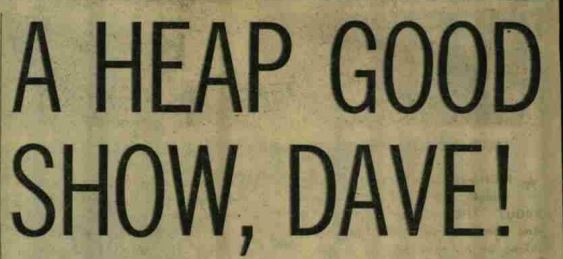
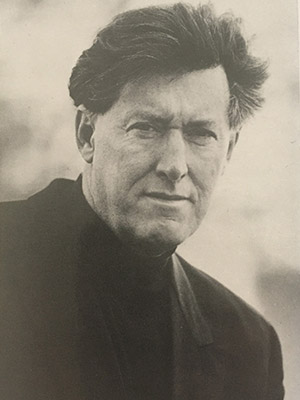
Robin Brown felt thoroughly vindicated. 'For the first time in years,' he would later write in his memoir Shark Infested Custard, 'I was not just pleased, but in a sense triumphant, to see my credit rise over the last frame of that film, for in its funny way it was an almost perfect television documentary - a powerful message for life, sugar-coated for easy swallowing, cheerfully wrapped, serious but in no danger of being taken too seriously.'
Dave Allen felt much the same. 'Eccentrics are not slightly mad,' he reflected of the 'gentle, charming' people he had met. 'They are slightly sane. They have the ability to step when they choose into another world, where they have a lot of fun, where they can live as long as it suits them as part of the most entertaining dream their fertile minds can make up. It is a good thing that England has always kept a special place for its eccentrics.'
The programme (and its follow-up, Eccentrics At Play, which was screened on 30th December) proved so popular that Bob Heller acted quickly to order more. It would actually go on to spawn no fewer than twenty-five more half-hour episodes, and another fifty-minute special, spread out over the next four years.
The first series, called Dave Allen And Friends, was broadcast by ATV from January to March 1977 in the early evening slot of 7-7:30pm, between the soaps Crossroads and Coronation Street. 'We were the salty savoury,' Brown would say, 'in a very lucrative white-bread sandwich'.
Among the many aspects of British life explored, the episodes saw Allen visit a town in Yorkshire where all the local laws depended on a man blowing an ox-horn four times every night; inspect a room covered from top to bottom with postage stamps; meet a fire-eating clown in a windy wood up in the Scottish Highlands; a ten-year-old museum curator; a barmaid who was the country's current shouting champion; a dairy-farming poet in Cornwall; Chris Bazlinton, the building society employee in London's Baker Street who had to answer all the letters addressed to Sherlock Holmes; a vegetarian with a garden full of edible weeds; an elderly man who, on each of his birthdays, walked one mile for every year of his life; Fenman Ernie James, the country's last punt-gunning duck hunter; and Mrs Maggy Hallam of Abingdon, the owner of fourteen Pomeranian dogs, all of whom were named after Queen Victoria's grandchildren and resided in a special palace built at the bottom of her garden.

The series surprised even ATV by how quickly it found, and maintained, a large following in what was traditionally a poorly-watched slot, featuring regularly in the week's top ten most-popular shows, with an average of around 15.5 million viewers. The critical reaction was positive, too: 'Contrary to many professional interviewers with fulsome involvement,' wrote one observer, 'Allen met his subjects with subdued, but obviously sincere, interest,' while another praised him for his 'refreshing openness' and 'sensitivity'.
Allen and Brown, encouraged by the enthusiastic support shown by their bosses at ATV (who were now offering them a bigger budget), then travelled across to the other side of the Atlantic to spend three-and-a-half months filming material for a second thirteen-episode series, this time simply called Dave Allen. Highlights included visits to places as diverse as a wild and isolated homestead on the Salmon River in central Idaho and the glitzy gambling centres of Las Vegas; an encounter with a solitary mole-catching mountain man; a specially-bred three-foot high horse; a parrot motel; a sign language-speaking gorilla; a dog whisperer; a gay wedding; a musical tobacco auction; a nut museum; a group of New York cops who spent each night dressed in drag; an infant-aged faith healer and preacher; a one-eyed tracker; the folk herbalists of Southern Appalachia; a diminutive North Carolina dentist who had filled his garden with 60ft-high statues of naked Amazonians; and a woman who regularly danced a classical ballet in the empty theatre of a ghost town in California's Death Valley.
This series attracted an even bigger audience than its predecessor, with an average of 16.5m watching each week - a hugely impressive following for an early evening slot. It won praise, once again, for the unforced way that Allen acquired his insights.
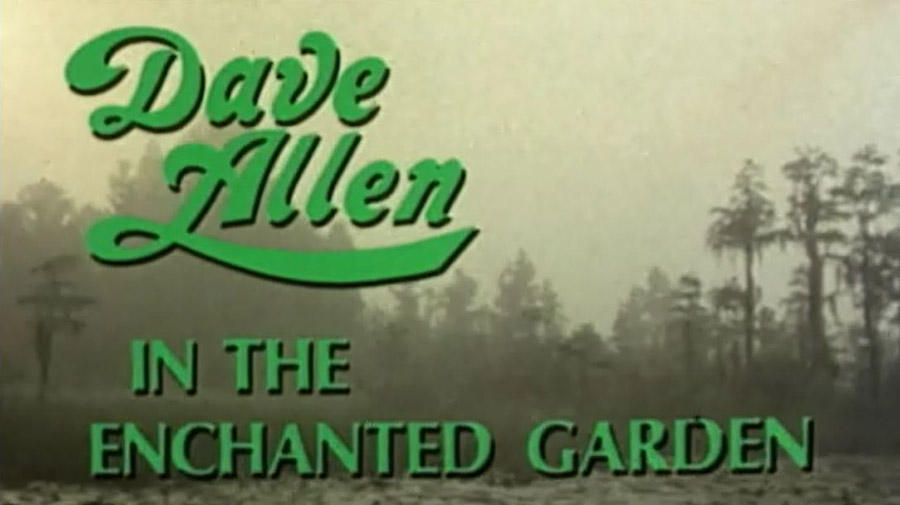
The Allen/Brown collaboration finally came to a close with one final, stand-alone, fifty-minute episode: In The Enchanted Garden. Broadcast on 29th April 1978, it was a particularly lyrical style of film that saw Allen explore the 438,000-acre Okefenokee swamps of Georgia, with their floating islands abounding with alligators, snakes, insects and fever. Marvelling at the vast expanse of then-unspoilt wilderness whose Native American name translates as the 'Land of Trembling Earth', a visibly-moved Allen judged it 'the most enchanting place I have ever visited in my life'.
It seemed an apt point at which to stop. Having deconstructed the man-made notion of what it is to be 'normal', the camera was left to gaze at what was natural.
The two-man team, after this, felt satisfied with what they had done. Robin Brown, who would go on to direct and produce many other documentaries of great note and grace, would always regard the work that he did with Dave Allen as crucial in strengthening the courage of his artistic convictions. Allen, in turn, would remain quietly proud of his own contribution to the factual field.
He had done it his own way - just one complex, vulnerable, imperfect human being interacting with other complex, vulnerable, imperfect human beings - and, without ever compromising his commitment to gentleness, respect and openness, had distributed insight and enchantment unobtrusively (as the great Flann O'Brien, a friend of his father's, once put it about the sun) 'colouring the sides of things that were unalive and livening the hearts of living things'.
He had also popularised, and enriched, the documentary form, inspiring a trend for a more personal, playful and unorthodox approach that continues, at least as an option, through to the present day. His example would encourage those who followed him to find, rather than force or fabricate, the fun in the factual.
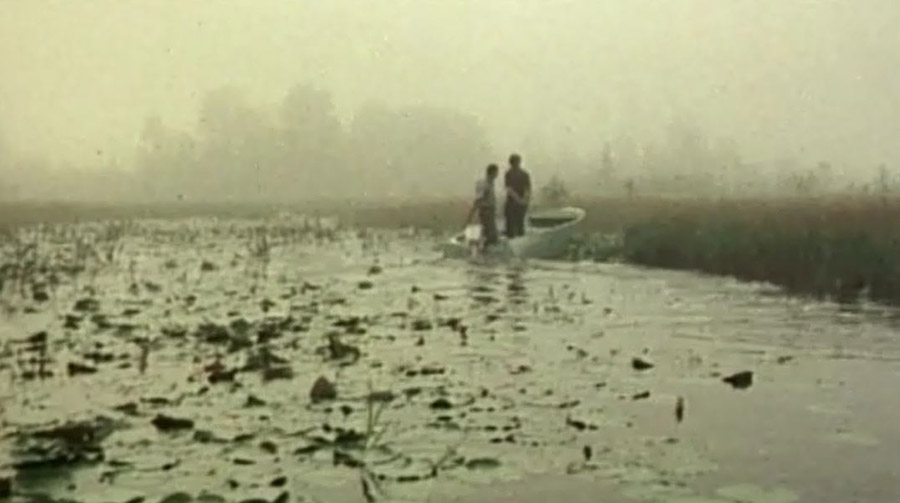
The fact that no one since has ever quite managed to match him for his humility, sensitivity and wit is one reason why his own body of documentary work today so richly deserves repeating. There are many of us who can learn from it, as well as many who will certainly enjoy it.
There is one other thing that is well worth remembering: Dave Allen made all of these documentaries in addition to his comedy shows, rather than instead of them. At the same time that critics were applauding his factual programmes, Dave Allen At Large was winning the Silver Rose at the Montreux Television Festival.
While current commissioning editors continue to look to send comedians out and about, therefore, they might also make more of an effort to make some comedy shows with them as well. Such an active appreciation of versatility, one feels sure, is what Dave Allen, that most well-rounded of wits, would have wanted to live on as part of his legacy.
Programmes
Dave Allen In Search Of The Great English Eccentric
8th October 1974
Dave Allen: Eccentrics At Play
30th December 1974
Dave Allen And Friends
4th January 1977
11th January 1977
18th January 1977
25th January 1977
1st February 1977
8th February 1977
15th February 1977
22nd February 1977
1st March 1977
8th February 1977
15th March 1977
22nd March 1977
29th March 1977
Dave Allen
3rd January 1978
10th January 1978
17th January 1978
24th January 1978
31st January 1978
7th February 1978
14th February 1978
21st February 1978
28th February 1978
7th March 1978
14th March 1978
21st March 1978
Dave Allen In The Enchanted Garden
29th April 1978
Help us publish more great content by becoming a BCG Supporter. You'll be backing our mission to champion, celebrate and promote British comedy in all its forms: past, present and future.
We understand times are tough, but if you believe in the power of laughter we'd be honoured to have you join us. Advertising doesn't cover our costs, so every single donation matters and is put to good use. Thank you.
Love comedy? Find out moreThe Essential Dave Allen

When Dave Allen passed away in March 2005, we lost a true comedy great. Sitting cross-legged on a high stool, whiskey in one hand, cigarette in the other, Dave Allen's exasperated commentaries on the absurdities of modern life struck a chord with millions of fans in Britain, Ireland and Australia for over four decades.
He was a compelling storyteller - able to spin shaggy dog stories out of the almost any subject, including the missing tip of his fourth finger of his left hand, for which he provided various unlikely explanations. But his gentle, laconic wit could also give way to ferocious attacks on the media, the state and, most famously, the Catholic Church. He was a unique talent - a comic who could make his audiences laugh, cry, and be shocked, all in one.
This official celebration of Dave Allen's comedy has been drawn together by Graham McCann - Britain's best-loved entertainment writer. It is a treasure trove of stories, stand-up routines, sketches, interviews and photos, which takes us on a journey from the cradle to the grave. It will delight Dave Allen's million of fans, old and new alike.
First published: Monday 7th November 2005
- Publisher: Hodder & Stoughton
- Pages: 320
- Catalogue: 9780340899434
![]() Buy and sell old and new items
Buy and sell old and new items
Search for this product on eBay
BCG may earn commission on sales generated through the links above.
- Published: Thursday 13th July 2006
- Publisher: Hodder & Stoughton
- Pages: 320
- Catalogue: 9780340899458
![]() Buy and sell old and new items
Buy and sell old and new items
Search for this product on eBay
BCG may earn commission on sales generated through the links above.
- Published: Thursday 25th September 2014
- Publisher: Hodder & Stoughton
- Download: 1.67mb
BCG may earn commission on sales generated through the links above.

